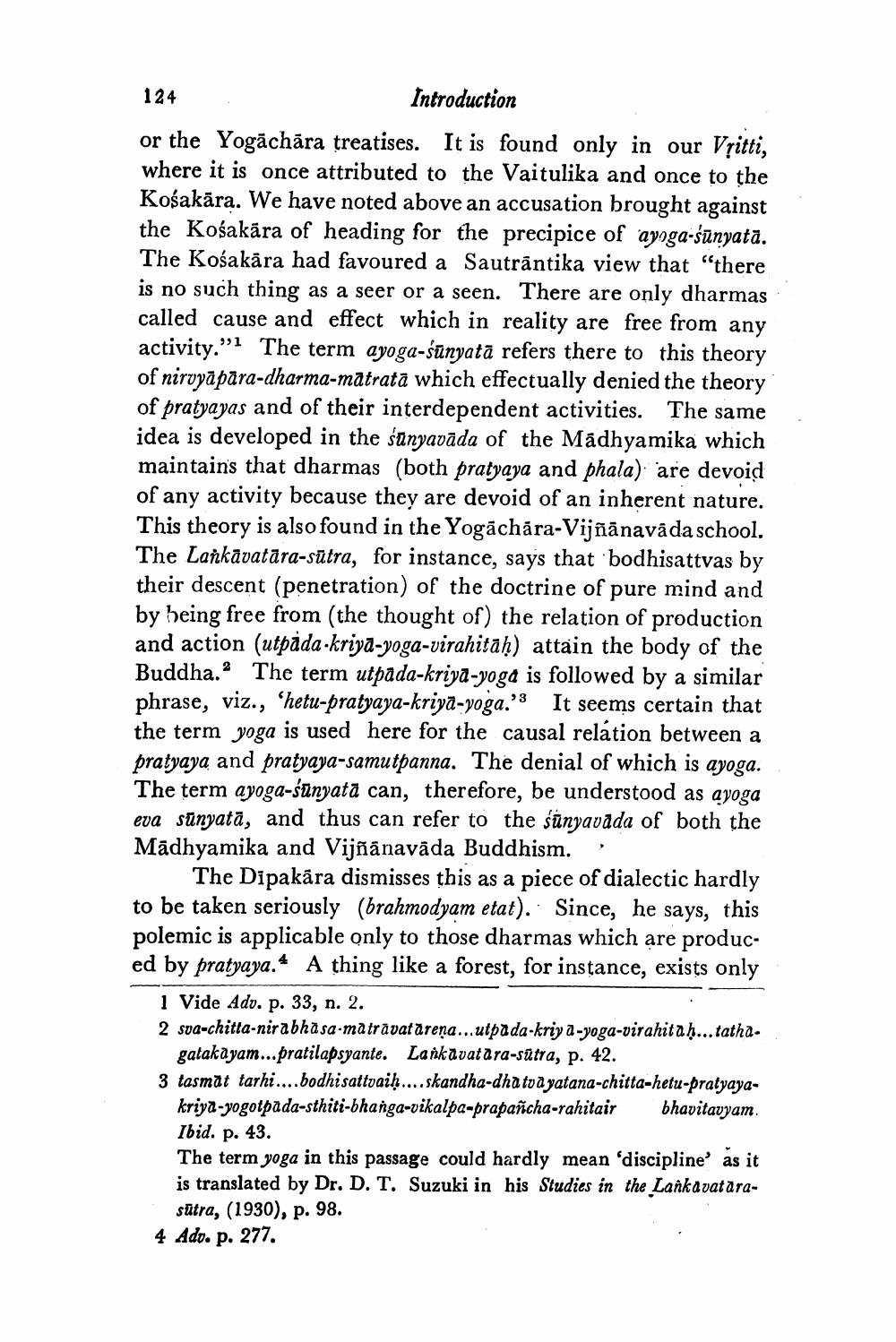________________ 124 Introduction or the Yogachara treatises. It is found only in our Vtitti, where it is once attributed to the Vaitulika and once to the Kosakara. We have noted above an accusation brought against the Kosakara of heading for the precipice of ayoga-sunyata. The Kosakara had favoured a Sautrantika view that "there is no such thing as a seer or a seen. There are only dharmas called cause and effect which in reality are free from any activity."! The term ayoga-sunyata refers there to this theory of nirvyapara-dharma-matrata which effectually denied the theory of pratyayas and of their interdependent activities. The same idea is developed in the sunyavada of the Madhyamika which maintains that dharmas (both pratyaya and phala). are devoid of any activity because they are devoid of an inherent nature. This theory is also found in the Yogachara-Vijnanavada school. The Lankavatara-sutra, for instance, says that bodhisattvas by their descent (penetration) of the doctrine of pure mind and by heing free from (the thought of) the relation of production and action (utpada-kriya-yoga-virahitah) attain the body of the Buddha. The term utpada-kriya-yoga is followed by a similar phrase, viz., 'hetu-pratyaya-kriya-yoga.' It seems certain that the term yoga is used here for the causal relation between a pratyaya and pratyaya-samutpanna. The denial of which is ayoga. The term ayoga-sunyata can, therefore, be understood as ayoga eva sunyata, and thus can refer to the sunyavada of both the Madhyamika and Vijnanavada Buddhism. The Dipakara dismisses this as a piece of dialectic hardly to be taken seriously (brahmodyam etat). Since, he says, this polemic is applicable only to those dharmas which are produced by pratyaya." A thing like a forest, for instance, exists only 1 Vide Adv. p. 33, n. 2. 2 sva-chitta-nirabhasa-matravat arena...utpada-kriy a-yoga-virahitah...tatha. gatakayam... pratilapsyante. Lankavatara-sutra, p. 42. 3 tasmat tarhi ....bodhisattvaih....skandha-dhatvayatana-chitta-hetu-pratyayakriya-yogotpada-sthiti-bhanga-vikalpa-prapancha-rahitair bhavitavyam. Ibid. p. 43. The term yoga in this passage could hardly mean 'discipline as it is translated by Dr. D. T. Suzuki in his Studies in the Lankavatara sutra, (1930), p. 98. 4 Add. p. 277.




